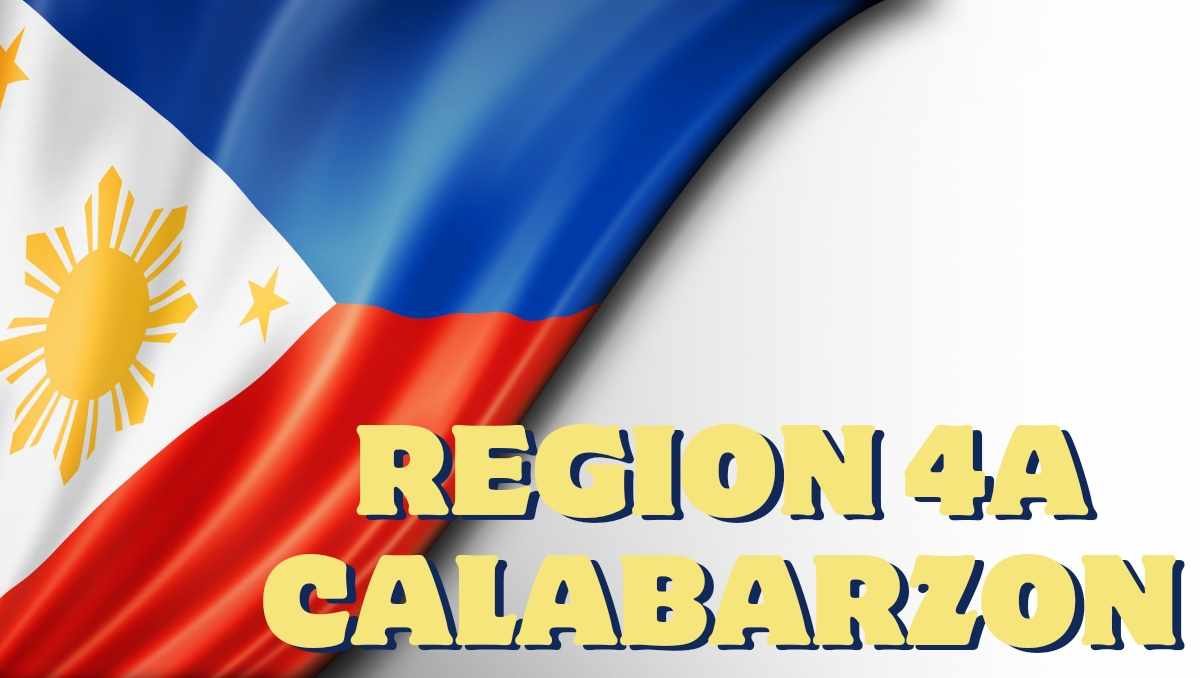Region 4A, officially known as CALABARZON, is an administrative region in the Philippines. It is located in the central section of Luzon. The name CALABARZON is an acronym derived from the five provinces that compose it.
Quick Summary:
| Attribute | Value |
|---|---|
| Land Area (2013) | 165.76 km2 (6400.13 sq mi) |
| Population as of 01 May 2020 | 16,195,042 |
| Regional Center | City of Calamba |
| Provinces of Region 4A | Batangas, Cavite, Laguna, Quezon, and Rizal |
| Highly urbanized city | Lucena |
| Consists of | 20 cities, 122 municipalities, and 4,019 barangays |
Also Read: List of Regions in the Philippines
Region 4A Calabarzon Map
Region 4A Provinces
CALABARZON is composed of the following five provinces:
- Cavite: Officially the Province of Cavite, is a province in the Philippines located in the Calabarzon region in Luzon. Located on the southern shores of Manila Bay and southwest of Manila, it is one of the most industrialized and fastest-growing provinces in the Philippines.
- Laguna: Officially the Province of Laguna, is a province in the Philippines located in the Calabarzon region in Luzon. Its capital is Santa Cruz while its largest city is the City of Calamba and the province is situated southeast of Metro Manila, south of the province of Rizal, west of Quezon, and north of Batangas.
- Batangas: Officially the Province of Batangas, is a first-class province of the Philippines located on the southwestern part of Luzon in the CALABARZON region.
- Rizal: Officially the Province of Rizal, is a province in the Philippines located in the Calabarzon region in Luzon. Its capital is the city of Antipolo. It is about 16 kilometers (9.9 mi) east of Manila.
- Quezon: officially the Province of Quezon, is a province in the Philippines located in the Calabarzon region of Luzon. Kaliraya/Kalilayan was the first known name of the province upon its creation in 1591. Around the middle of the 18th century, it was changed to Tayabas
Geography
The region is situated in southwestern Luzon, just south and east of Metro Manila. It is bordered by Manila Bay and the South China Sea to the west, Lamon Bay and the Bicol Region to the east, Tayabas Bay and the Sibuyan Sea to the south, and Central Luzon to the north. It is home to places like Mount Makiling near Los Baños, Laguna, and Taal Volcano in Batangas.
Population and Density
As of the 2020 census, CALABARZON had a population of 16,195,042. This makes it the most populous region in the Philippines. It is also the country’s second most densely populated region after the National Capital Region. The population density is computed at 977 inhabitants per square kilometer or 2,530 inhabitants per square mile.
Economy
The region had a Gross Domestic Product (GDP) of ₱2.78 trillion or $56.5 billion in 2021. It had a growth rate of 7.6%.
History
The history of the area now known as CALABARZON dates back to early historic times. Prior to its creation as a region, CALABARZON, together with the Mimaropa region, the province of Aurora, and several parts of Metro Manila, formed the historical region known as Southern Tagalog, until they were separated in 2002 by virtue of Executive Order No. 103.
Notable Figures
Since the Spanish colonial period of the Philippines, the region has served as home to some of the most important Philippine historical figures, including the Philippine national hero, José Rizal, who was born in Calamba.

